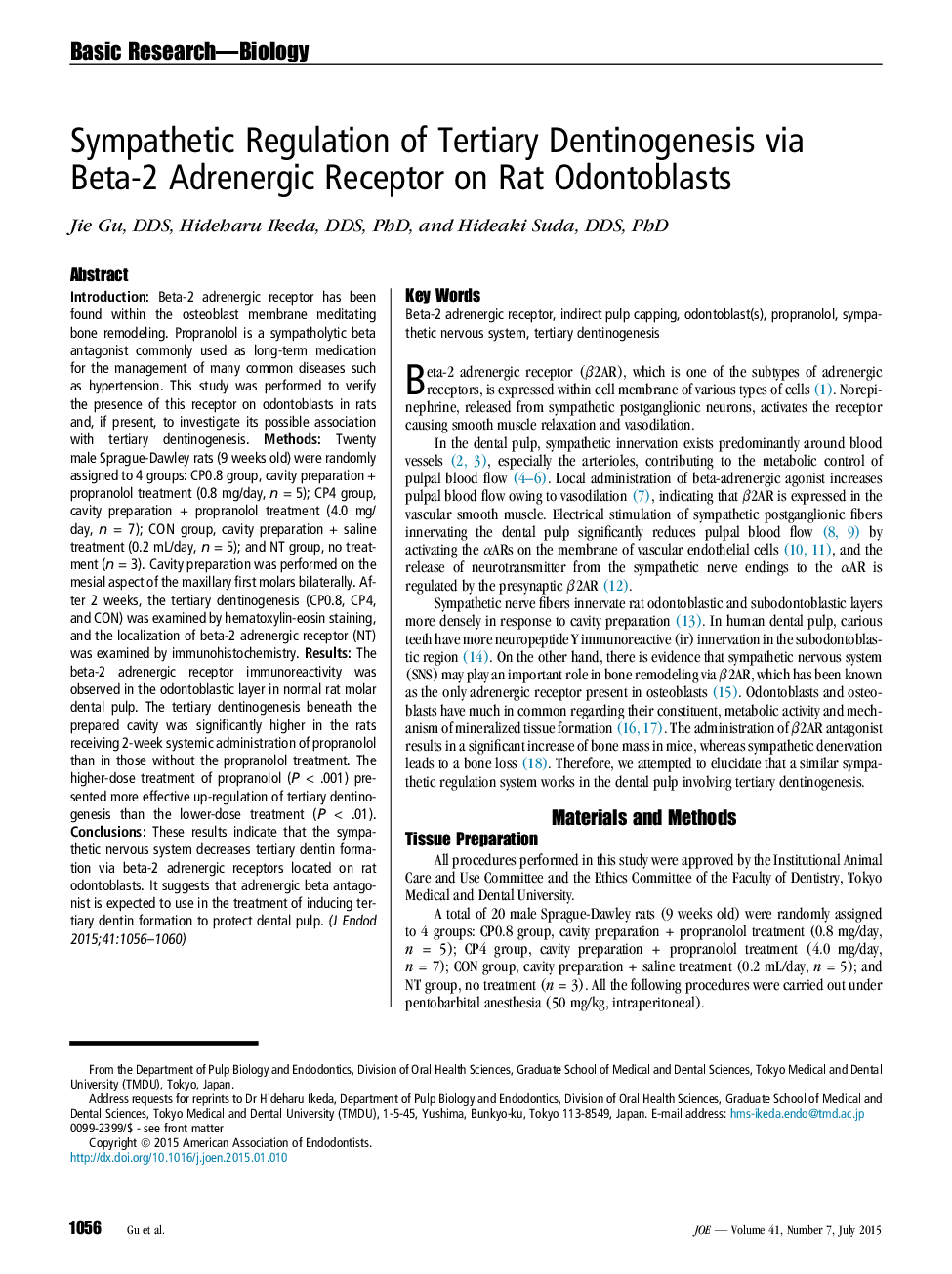| Article ID | Journal | Published Year | Pages | File Type |
|---|---|---|---|---|
| 3147462 | Journal of Endodontics | 2015 | 5 Pages |
•Immunohistochemically, beta-2 adrenoreceptor is observed on rat odontoblasts.•Changes of tertiary dentinogenesis after cavity preparation are examined.•Tertiary dentinogenesis increases when beta-2 adrenergic receptor is inhibited.•Higher dose of propranolol up-regulates tertiary dentinogenesis more remarkably.
IntroductionBeta-2 adrenergic receptor has been found within the osteoblast membrane meditating bone remodeling. Propranolol is a sympatholytic beta antagonist commonly used as long-term medication for the management of many common diseases such as hypertension. This study was performed to verify the presence of this receptor on odontoblasts in rats and, if present, to investigate its possible association with tertiary dentinogenesis.MethodsTwenty male Sprague-Dawley rats (9 weeks old) were randomly assigned to 4 groups: CP0.8 group, cavity preparation + propranolol treatment (0.8 mg/day, n = 5); CP4 group, cavity preparation + propranolol treatment (4.0 mg/day, n = 7); CON group, cavity preparation + saline treatment (0.2 mL/day, n = 5); and NT group, no treatment (n = 3). Cavity preparation was performed on the mesial aspect of the maxillary first molars bilaterally. After 2 weeks, the tertiary dentinogenesis (CP0.8, CP4, and CON) was examined by hematoxylin-eosin staining, and the localization of beta-2 adrenergic receptor (NT) was examined by immunohistochemistry.ResultsThe beta-2 adrenergic receptor immunoreactivity was observed in the odontoblastic layer in normal rat molar dental pulp. The tertiary dentinogenesis beneath the prepared cavity was significantly higher in the rats receiving 2-week systemic administration of propranolol than in those without the propranolol treatment. The higher-dose treatment of propranolol (P < .001) presented more effective up-regulation of tertiary dentinogenesis than the lower-dose treatment (P < .01).ConclusionsThese results indicate that the sympathetic nervous system decreases tertiary dentin formation via beta-2 adrenergic receptors located on rat odontoblasts. It suggests that adrenergic beta antagonist is expected to use in the treatment of inducing tertiary dentin formation to protect dental pulp.
